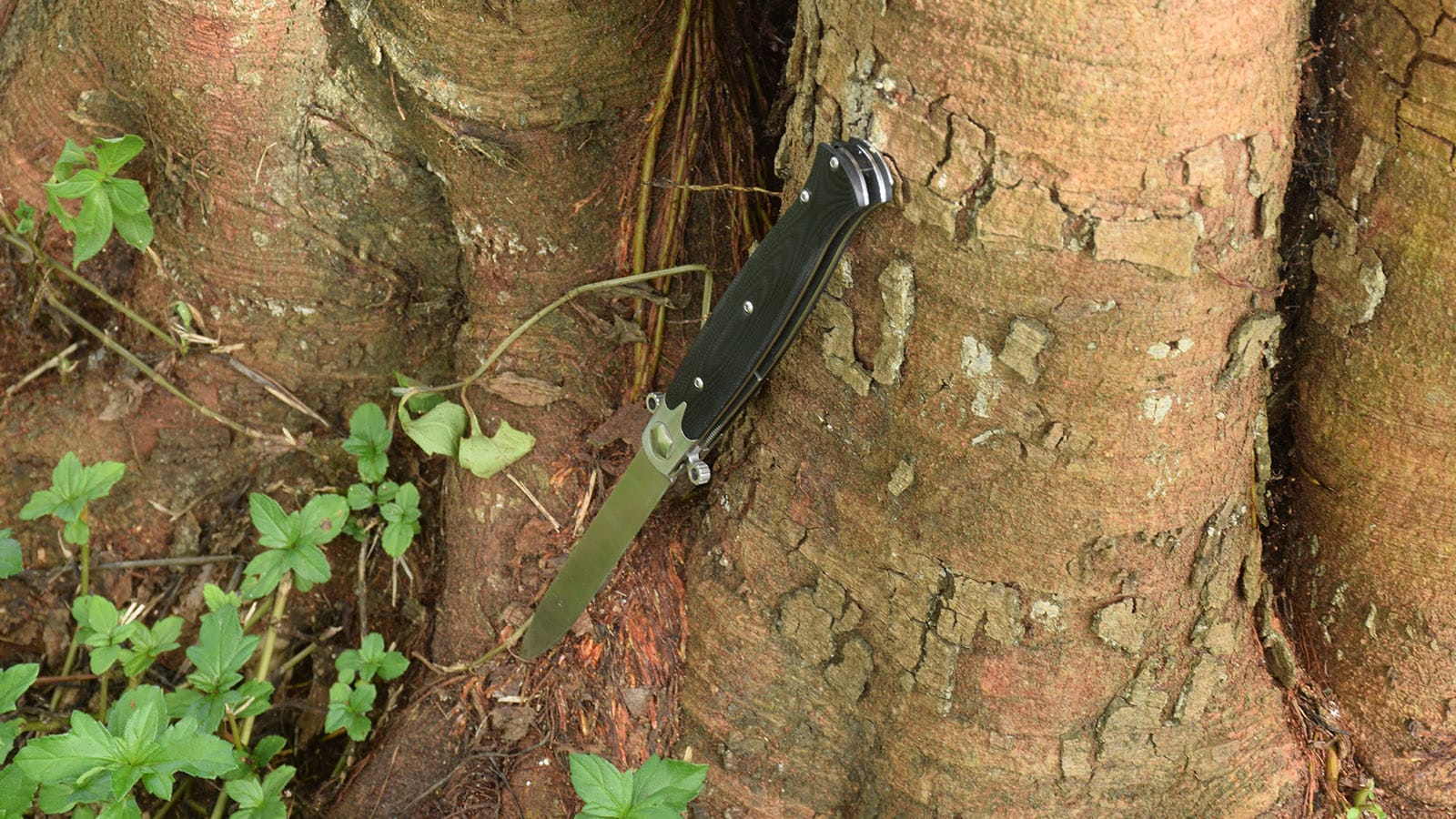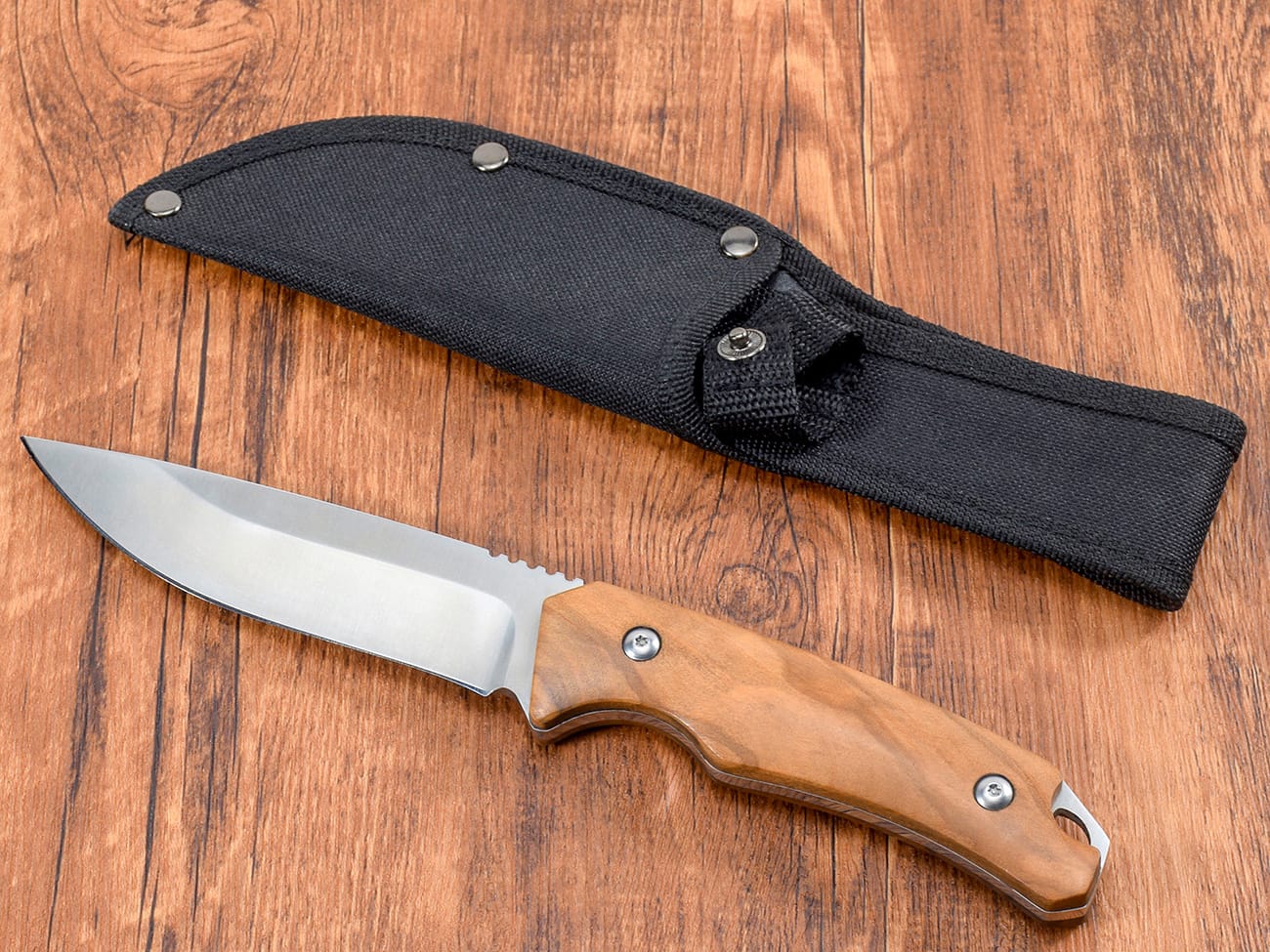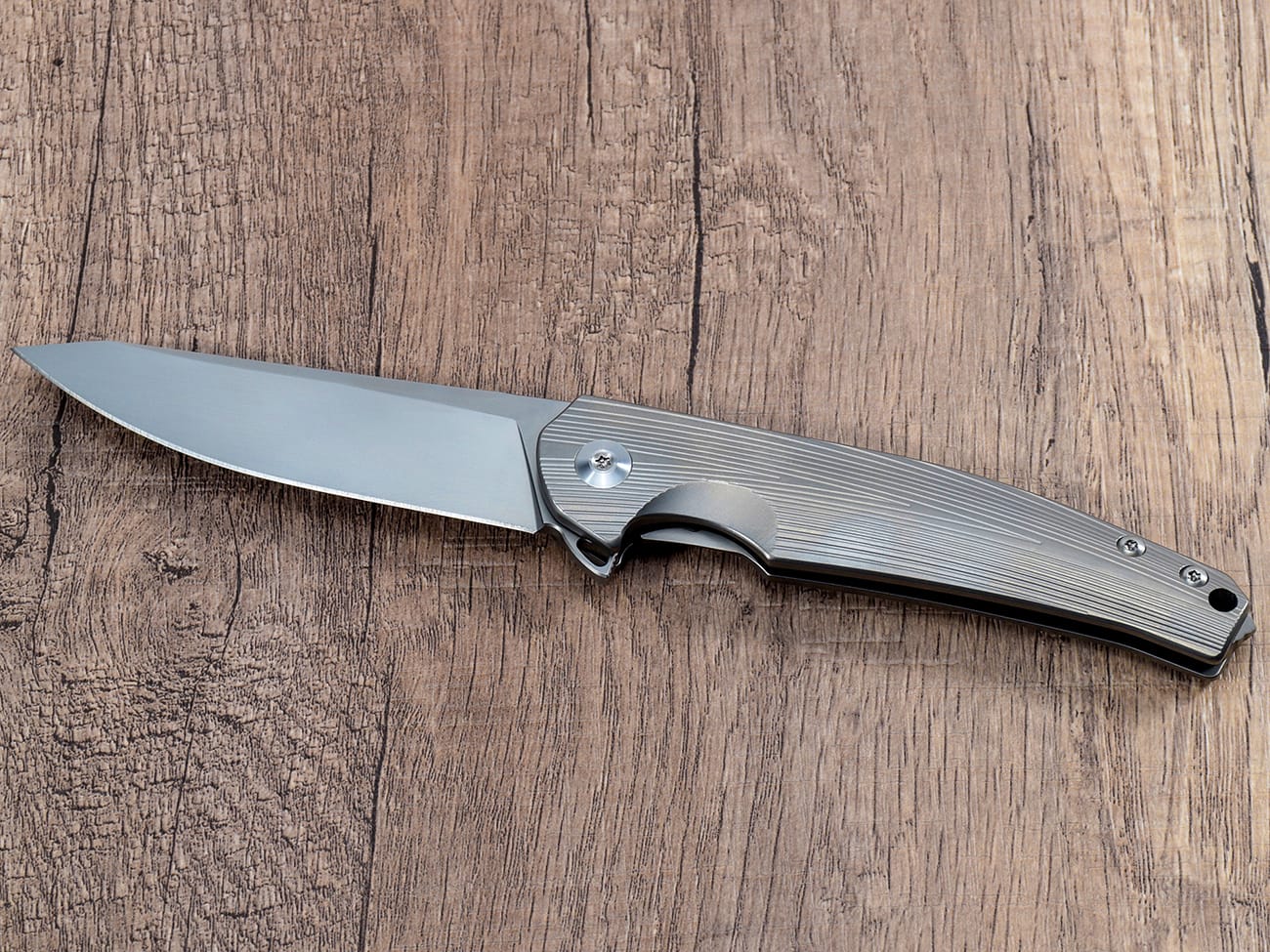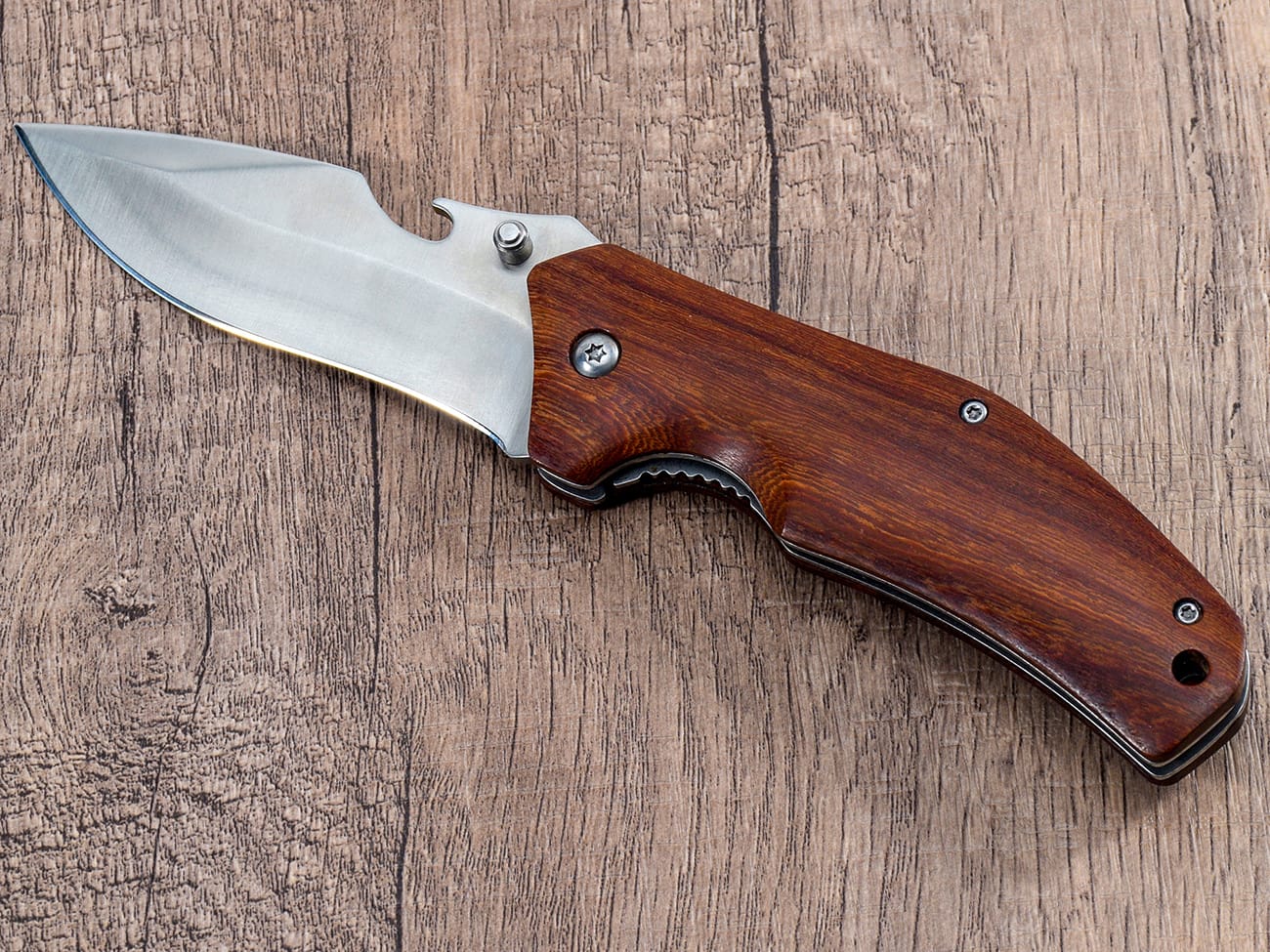Have you ever held a knife that feels like it was crafted just for your hand? A knife that not only serves its purpose but also tells a story of tradition, craftsmanship, and nature’s beauty? If you’re intrigued by the world of knives, particularly those with horn handles, you’re in for a treat. In this comprehensive guide, we’ll explore the fascinating world of knives with horn handles, uncovering their unique characteristics, benefits, and the artistry behind their creation. Whether you’re a collector, outdoor enthusiast, or simply appreciate fine craftsmanship, this article will deepen your understanding and appreciation of these remarkable tools.
What Makes Horn Handle Knives Stand Out?
Horn handle knives have been prized for centuries, and for good reason. But what exactly sets them apart from knives with other handle materials?
Natural Beauty and Uniqueness
One of the most striking features of a knife with a horn handle is its natural beauty. Each horn handle is unique, with its own pattern, color variations, and texture. This means that when you hold a horn-handled knife, you’re holding a one-of-a-kind piece. The natural variations in color and pattern can range from almost plain black to intricate swirls of beige and dark hues, making each knife a work of art in its own right.
Durability and Strength
Horn is not just aesthetically pleasing; it’s also a remarkably durable material. When properly treated and maintained, a horn handle can last for generations. It’s resistant to cracking and chipping, making it an excellent choice for knives that see frequent use. The natural properties of horn also provide a good grip, even when wet, which is crucial for safety and performance.
Comfort and Ergonomics
Many knife enthusiasts swear by the comfort of horn handles. The material has a natural warmth to it and can be shaped to fit the hand perfectly. Over time, the horn can even develop a patina from use, further enhancing its grip and personalizing it to the owner’s hand.
Historical Significance
Horn has been used in knife making for centuries, particularly in traditional European knives like the Laguiole. This historical significance adds a layer of depth and meaning to horn-handled knives, connecting the user to a long lineage of craftsmen and traditions.
How Are Horn Handles Made?
The process of creating a horn handle is a fascinating blend of traditional techniques and modern craftsmanship.
Sourcing the Horn
Most horn handles are made from buffalo horn, though other materials like deer antler or ram’s horn are also used. The horns are typically sourced as a byproduct of the meat industry, ensuring that no animals are harmed specifically for knife making.
Preparing the Material
Once sourced, the horn must be carefully prepared. This involves cleaning, cutting, and sometimes pressing the horn to achieve the desired shape and consistency. Some makers use a technique called “pressed horn” to create a more uniform appearance and strength.
Shaping and Finishing
The horn is then shaped to fit the knife’s tang (the part of the blade that extends into the handle). This requires skill and precision to ensure a secure fit and comfortable grip. The handle is then sanded smooth and polished to bring out its natural luster.
Customization and Embellishment
Many high-end knife makers offer customization options for horn handles. This can include engraving, inlays of other materials like wood or metal, or even dyeing the horn to achieve specific colors.
What Are the Advantages of Choosing a Knife with a Horn Handle?
Opting for a knife with a horn handle offers several distinct advantages:
- Aesthetic Appeal: The natural beauty of horn is unmatched, offering a sophisticated and unique look.
- Durability: When properly cared for, horn handles can last for decades.
- Comfort: The natural warmth and ergonomic properties of horn make for a comfortable grip.
- Heritage: Horn-handled knives connect you to centuries of knife-making tradition.
- Eco-Friendly: As a natural, biodegradable material, horn is more environmentally friendly than many synthetic alternatives.
Are There Any Drawbacks to Horn Handle Knives?
While horn handles offer many benefits, it’s important to consider potential drawbacks:
- Maintenance: Horn requires more care than synthetic materials to maintain its appearance and integrity.
- Cost: Due to the craftsmanship involved, horn-handled knives are often more expensive than their synthetic counterparts.
- Variability: The natural variations in horn can make it challenging to find an exact match if you’re looking for a set of knives.
- Sensitivity: Horn can be sensitive to extreme temperatures and humidity, potentially leading to cracking if not properly cared for.
How Do You Care for a Knife with a Horn Handle?
Proper care is essential to maintain the beauty and longevity of a horn-handled knife:
- Clean Gently: Use a soft, damp cloth to clean the handle after use. Avoid harsh chemicals or soaking in water.
- Oil Occasionally: Applying a small amount of food-grade mineral oil or linseed oil can help keep the horn from drying out.
- Store Properly: Keep the knife in a dry place, away from extreme temperatures and direct sunlight.
- Avoid Prolonged Moisture: While horn handles can handle some moisture, prolonged exposure can cause damage.
What Types of Knives Commonly Feature Horn Handles?
Horn handles are found on various types of knives, each with its own unique charm:
Laguiole Knives
The Laguiole knife, originating from the village of Laguiole in France, is perhaps the most famous knife associated with horn handles. These elegant folding knives often feature handles made from buffalo horn or other natural materials.
Hunting Knives
Many hunter knives feature horn handles, prized for their durability and natural grip in outdoor conditions.
Pocket Knives
High-end pocket knives often feature horn handles, offering a blend of practicality and sophistication for everyday carry.
Culinary Knives
Some artisanal kitchen knife makers use horn for handles, particularly on high-end chef’s knives and steak knife sets.
How Does Horn Compare to Other Handle Materials?
When considering a knife purchase, it’s helpful to compare horn to other common handle materials:
Horn vs. Wood
- Durability: Horn is generally more durable and resistant to moisture than wood.
- Appearance: Both offer natural beauty, but horn typically has a more uniform appearance.
- Maintenance: Wood may require more frequent oiling than horn.
Horn vs. Synthetic Materials (G10, Micarta)
- Grip: Horn offers a natural, warm grip compared to the sometimes cooler feel of synthetics.
- Customization: Synthetic materials offer more color options and consistent patterns.
- Durability: High-quality synthetics may be more durable in extreme conditions.
Horn vs. Metal (Titanium, Aluminum)
- Weight: Horn is typically lighter than metal handles.
- Temperature Sensitivity: Metal handles can become uncomfortably hot or cold, while horn remains more temperature-neutral.
- Aesthetics: Horn offers a more traditional, natural look compared to the modern appearance of metal handles.
What Should You Look for When Buying a Knife with a Horn Handle?
If you’re in the market for a horn-handled knife, keep these factors in mind:
- Quality of the Horn: Look for a handle with a smooth finish and no visible cracks or blemishes.
- Fit and Finish: The horn should be seamlessly integrated with the blade and any bolsters or other components.
- Origin: Consider the source of the horn and the reputation of the knife maker.
- Intended Use: Ensure the knife’s design and the specific characteristics of the horn handle suit your intended use.
- Care Instructions: Look for knives that come with clear care instructions to help maintain the horn handle.
How Has the Use of Horn in Knife Handles Evolved Over Time?
The use of horn in knife handles has a rich history that spans centuries:
Ancient Origins
Horn has been used for tool handles since prehistoric times, valued for its availability and workability.
Traditional Craftsmanship
In many cultures, horn-handled knives were symbols of status and craftsmanship, often featuring intricate designs and embellishments.
Industrial Revolution
With the advent of mass production, horn handles became less common as synthetic materials gained popularity.
Modern Revival
In recent years, there’s been a resurgence of interest in traditional materials and craftsmanship, leading to a renewed appreciation for horn-handled knives.
Contemporary Innovations
Modern knife makers are combining traditional horn-working techniques with new technologies, creating innovative designs that honor the past while looking to the future.

A beautiful example of a custom folding knife with a natural handle, showcasing the elegance and craftsmanship typical of high-quality knives.
Are Horn-Handled Knives Suitable for Professional Use?
While horn-handled knives are often associated with collectibles or special-occasion use, they can be suitable for professional applications:
Culinary Industry
Many chefs appreciate the unique feel and aesthetic of horn-handled knives in professional kitchens.
Outdoor Professions
Some outdoor professionals, like guides or wildlife researchers, prefer the natural feel and durability of horn handles.
Artisanal Trades
Craftspeople in various fields often choose horn-handled knives as both tools and expressions of their commitment to traditional craftsmanship.
How Do Environmental and Ethical Considerations Factor into Horn-Handled Knives?
As consumers become more environmentally conscious, it’s important to consider the ethical implications of horn-handled knives:
Sourcing
Reputable knife makers source horn ethically, typically as a byproduct of the meat industry.
Sustainability
Horn is a renewable resource, unlike many synthetic materials used in knife handles.
Biodegradability
At the end of its life, a horn handle will biodegrade naturally, unlike plastic or metal alternatives.
Cultural Significance
For some cultures, the use of horn in crafts like knife making is an important tradition to be preserved and respected.
What Are Some Notable Brands Known for Their Horn-Handled Knives?
Several knife makers have built reputations for excellence in horn-handled knives:
- Laguiole en Aubrac: Known for their traditional French folding knives with exquisite horn handles.
- Case Knives: An American company with a long history of producing quality horn-handled pocket knives.
- Opinel: While famous for their wooden handles, they also produce some beautiful horn-handled models.
- Custom Makers: Many individual artisans specialize in creating unique, high-end knives with horn handles.
How Can You Authenticate a Genuine Horn-Handled Knife?
With the popularity of horn-handled knives, it’s important to be able to distinguish genuine articles from imitations:
- Visual Inspection: Real horn will have natural variations and imperfections.
- Touch Test: Horn has a warm, natural feel unlike plastic imitations.
- Maker’s Mark: Reputable makers will often have clear markings or certificates of authenticity.
- Price: If the price seems too good to be true for a horn-handled knife, it probably is.
What Does the Future Hold for Horn-Handled Knives?
As we look to the future, several trends are shaping the world of horn-handled knives:
- Sustainable Practices: Increased focus on ethical sourcing and sustainable production methods.
- Technological Integration: Combining traditional horn handles with modern blade materials and designs.
- Customization: Growing demand for personalized, one-of-a-kind knives.
- Education: More emphasis on teaching consumers about the care and appreciation of natural handle materials.
In conclusion, knives with horn handles represent a beautiful intersection of nature, tradition, and craftsmanship. They offer a unique combination of aesthetics, durability, and connection to history that many knife enthusiasts find irresistible. Whether you’re a collector, a professional user, or simply someone who appreciates fine craftsmanship, a horn-handled knife can be a valuable and meaningful addition to your collection or everyday carry.Remember these key points about knives with horn handles:
- Each horn handle is unique, offering natural beauty and individuality
- Horn handles are durable, comfortable, and develop a personalized patina over time
- Proper care is essential to maintain the beauty and integrity of horn handles
- Horn-handled knives connect users to centuries of knife-making tradition
- When purchasing, look for quality craftsmanship and ethical sourcing
- Horn handles offer a sustainable, biodegradable alternative to synthetic materials
Whether you’re considering your first horn-handled knife or adding to an existing collection, the world of these beautiful tools offers endless fascination and appreciation for the skilled craftsmanship that goes into creating each unique piece.




